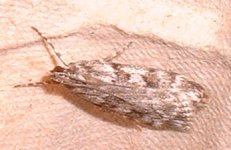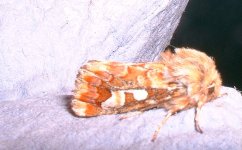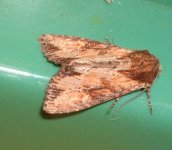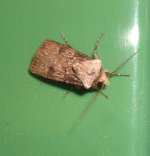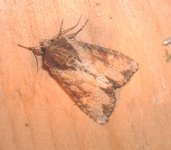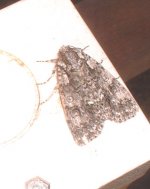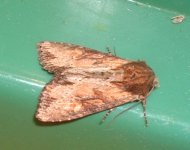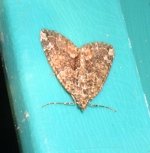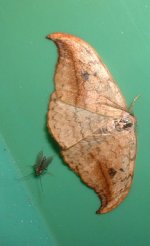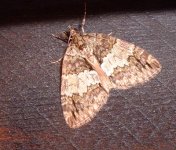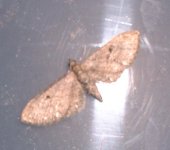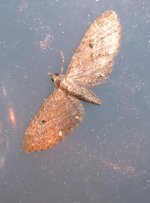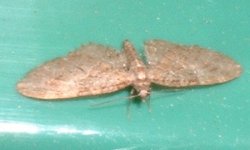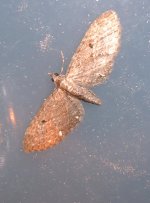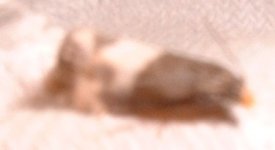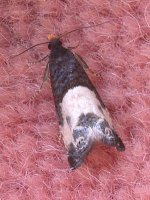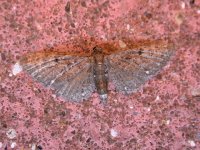Hi Ken,
I agree with Chris on the ID's but as to 1 and 15 I haven't got any idea, 15 is at a bad angle with insufficient wing visible to make more than a guess.
I'm still getting very poor catches in comparison with previous years, e.g. last night produced the following list.
Brimstone 1
Knot Grass 1
Flame Carpet 2
Spruce carpet 1
Scalloped Hazel 1
Water Carpet 4
Rivulet 8
Lesser Swallow Prominent. 1
Small Angle Shades. 1
I live in a very small country village, situated in a well wooded valley, surrounded by Oak, Birch, Sallow, Poplar, Alder and numerous other larval foodplants. Perhaps it's the new Sodium street lighting that's causing the problem? (there is a road at the end of my garden).
It's certainly not a shortage of moths in the vicinity, yesterday whilst beating Oak I had hundreds of moth larvae tumble into the tray as well as the Purple Hairstreak butterfly larvae I was looking for, and I was only a few hundred yards from home.
I do have a resident Bat population but seldom have more than three or four over the trap during any evening. It can't be the size of my garden either, it's 125' x 30' and is basically a wild garden and has always produced considerable catches in the past. I have tried replacing my MV bulb but without any change in moth numbers.
Perhaps a change of venue will work, I will have to see what National Moth Night produces this weekend.
Harry Eales.




